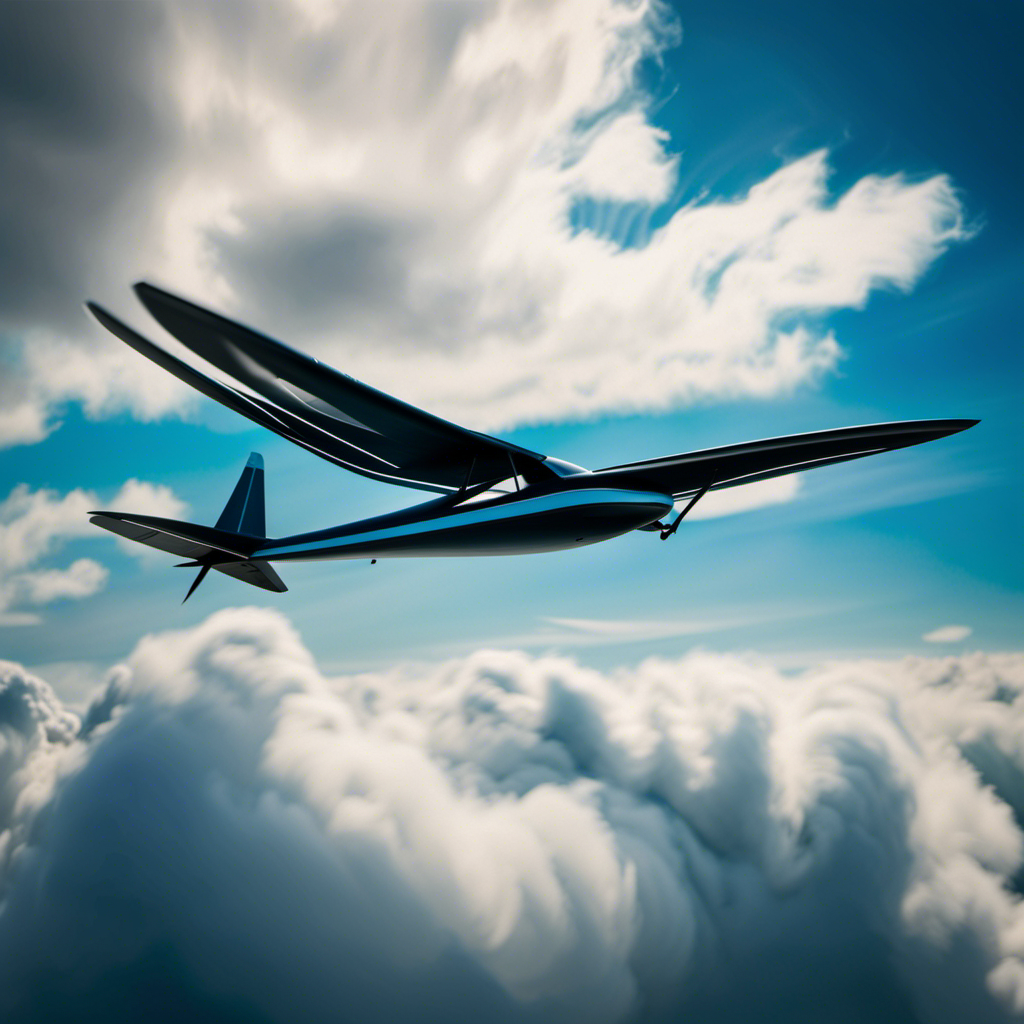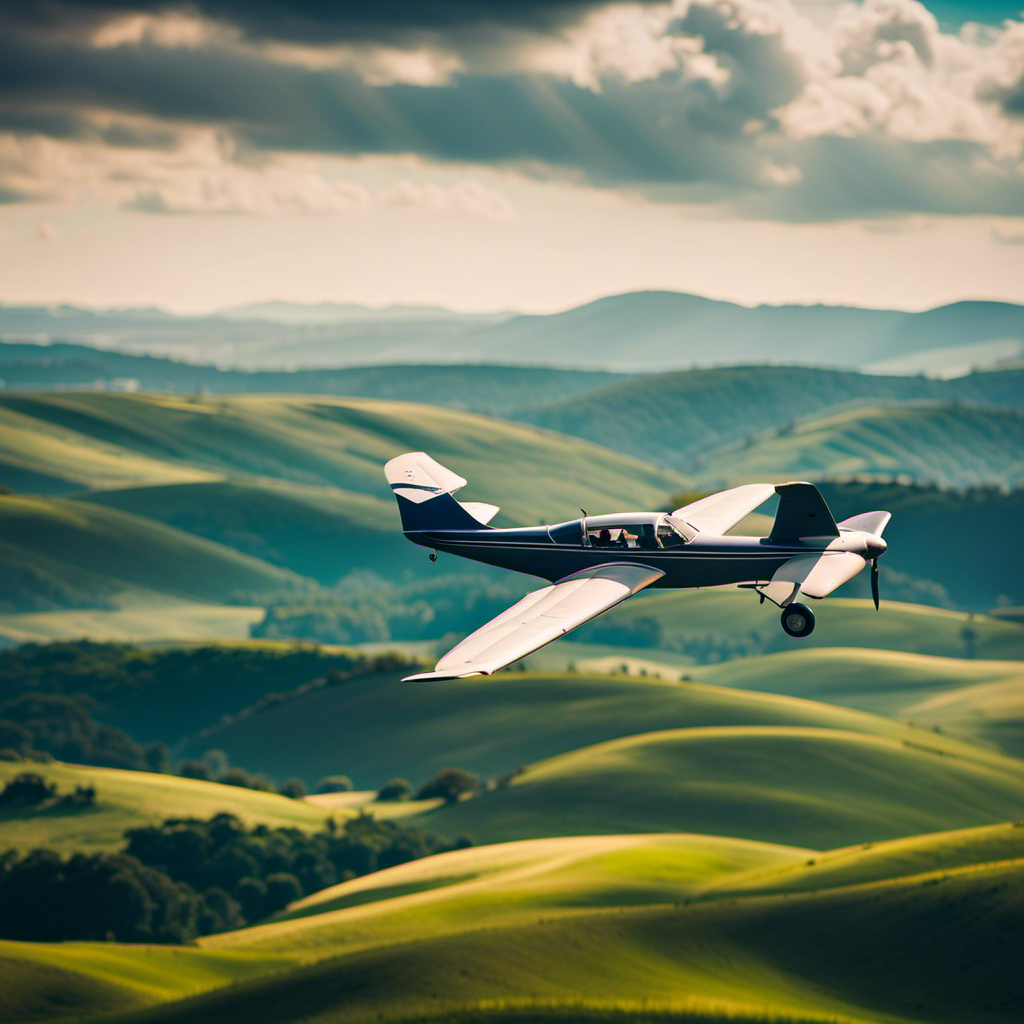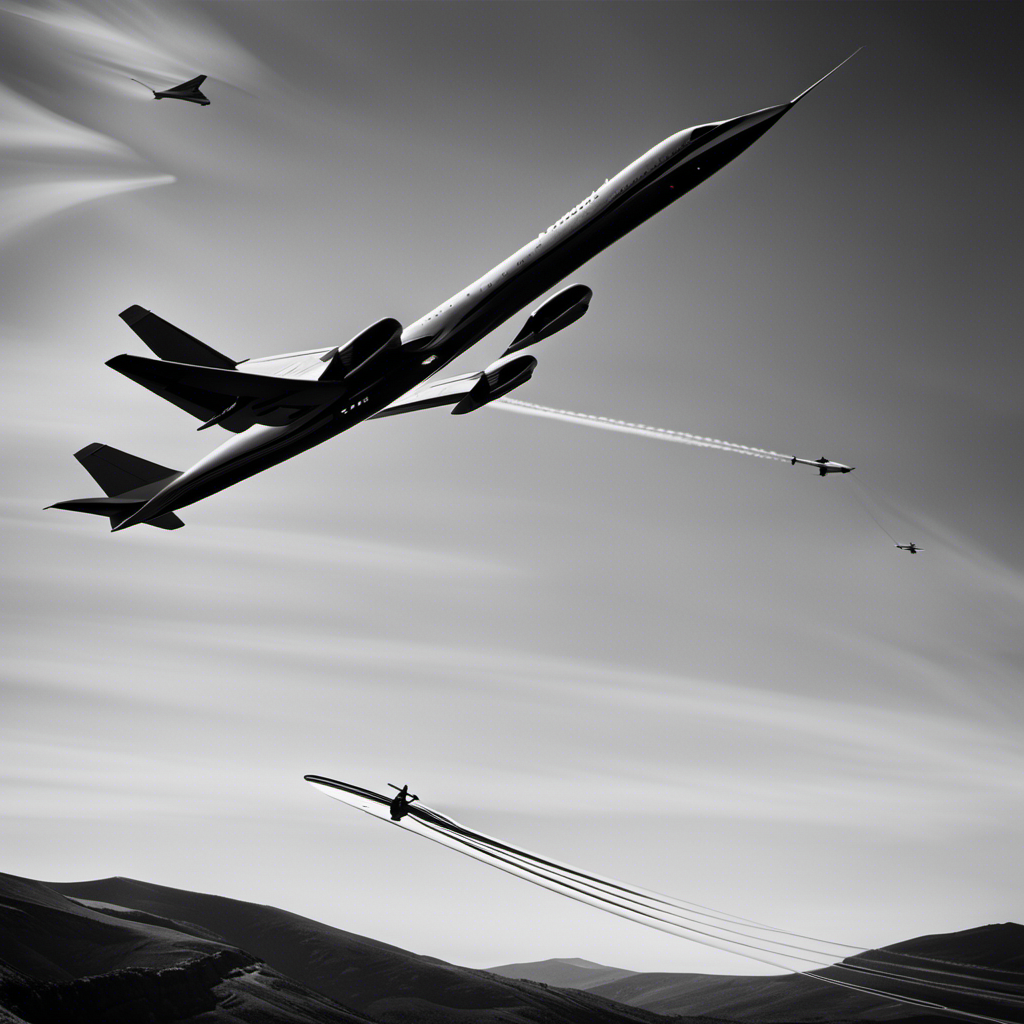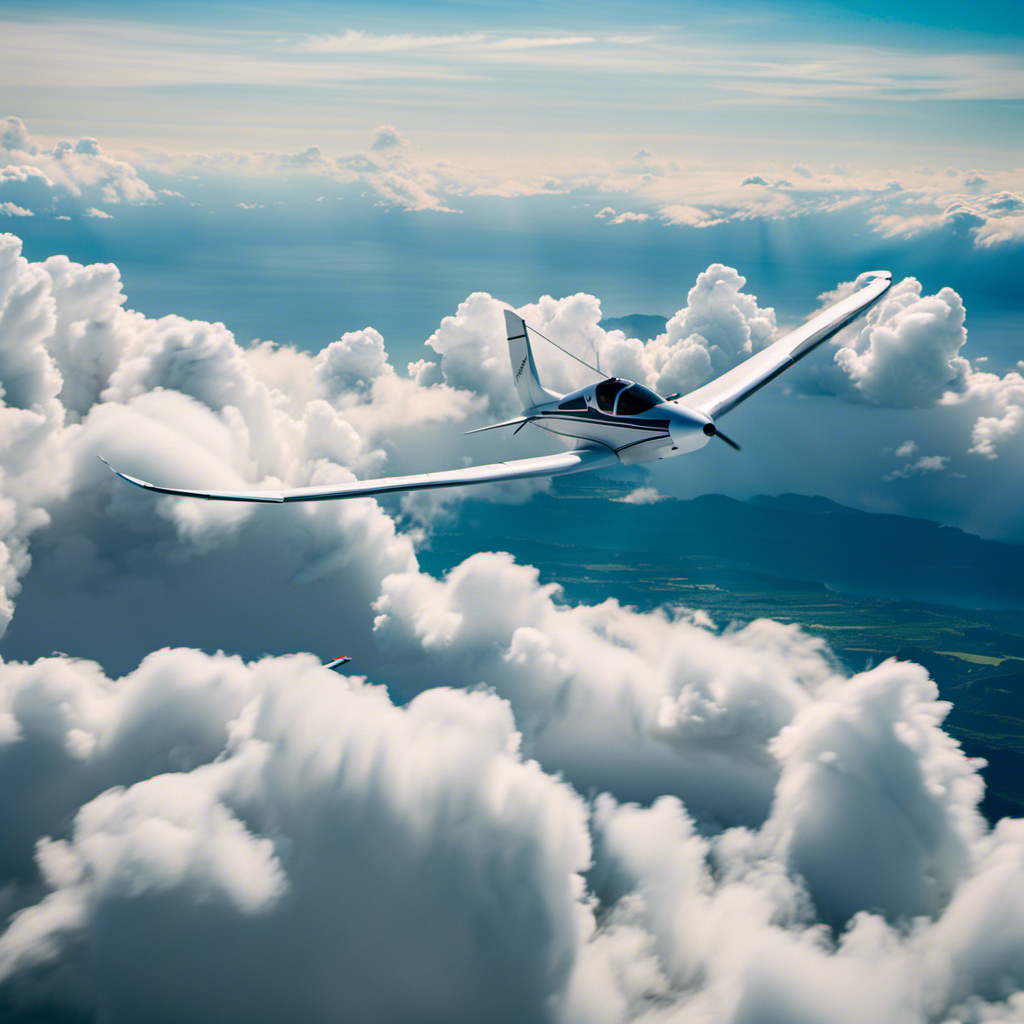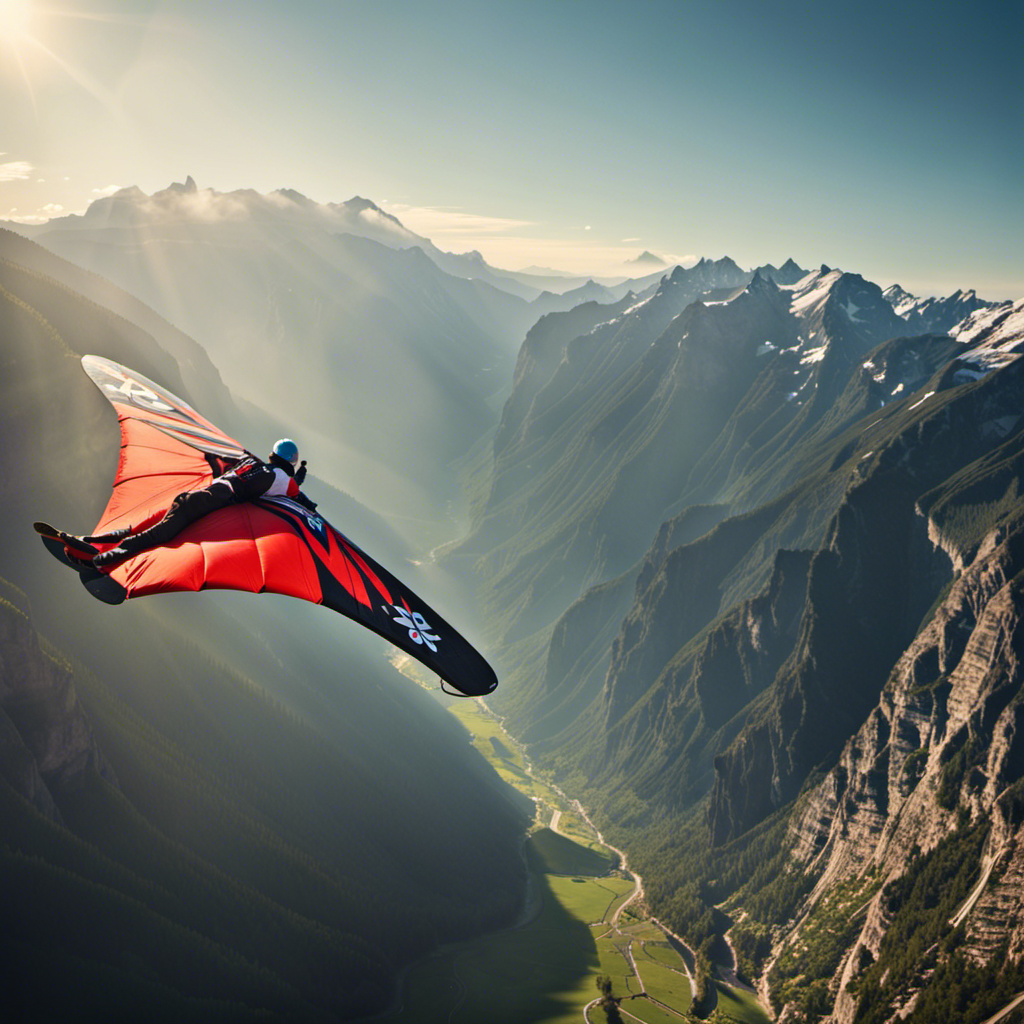As a glider pilot, I have always been fascinated by the impressive speeds that these aircraft can reach. Gliders have the amazing ability to soar through the air without an engine, reaching high speeds.
In this article, we will delve into the world of glider speed, exploring the factors that influence it, the records that have been set, and the exhilarating joy that comes from flying through the air at such incredible speeds.
So, let’s strap in and explore just how fast these gliders can fly.
Key Takeaways
- Wind direction significantly affects glider groundspeed
- Thermal activity provides lift for gliders
- Safety considerations include regular inspections and speed limitations
- Advancements in glider technology have led to improved aerodynamics and lighter materials
Introduction to Gliders and Their Unique Flying Abilities
Gliders are unique because they don’t have an engine, which means you can only fly them by relying on natural air currents and thermals. This reliance on natural forces sets gliders apart from other aircraft and makes their flight experience truly exceptional.
Glider technology has evolved over the years to maximize their ability to stay aloft for extended periods. The absence of an engine not only reduces the complexity and weight of the aircraft but also eliminates the noise and vibration associated with powered flight. These advantages of glider flight create a serene and peaceful atmosphere, allowing pilots to fully immerse themselves in the experience of soaring through the sky.
Now, let’s move on to exploring the basics of glider speed and how it is achieved without the use of an engine.
The Basics of Glider Speed
Understanding glide ratios and factors affecting glider speed are crucial elements in comprehending the dynamics of glider flight.
Glide ratio refers to the distance a glider can travel horizontally for every unit of altitude it loses. It is determined by various factors such as the aerodynamic design of the glider, the weight of the glider, and environmental conditions such as wind speed and direction.
Understanding Glide Ratios
Glide ratios show how efficiently gliders can maintain altitude while flying. Understanding lift forces is crucial in calculating these ratios. Lift is the force that opposes the weight of the glider and keeps it in the air. To calculate the glide ratio, you divide the distance traveled horizontally by the loss of altitude during that distance. This ratio gives us an idea of how far the glider can travel for a given loss of altitude.
A high glide ratio means the glider can cover more distance with minimal descent. Factors such as wing design, air density, and pilot skill can affect glide ratios.
Now, let’s delve into the factors that can impact the speed of a glider.
Factors Affecting Glider Speed
Factors such as wind speed, air density, and wing design can impact how quickly a glider travels through the air. To understand these factors better, let’s take a closer look at each one:
| Factors | Impact on Glider Speed |
|---|---|
| Wind Speed | A headwind can slow down a glider’s forward progress, while a tailwind can increase its speed. Pilots often look for areas with favorable wind conditions to achieve higher speeds. |
| Air Density | Higher air density provides more lift, allowing the glider to fly faster. This is why gliders tend to perform better in cooler, denser air at higher altitudes. |
| Wing Design | The shape, size, and aerodynamics of a glider’s wings greatly affect its performance. Wings with a higher aspect ratio (length to width) and efficient airfoils can generate more lift and reduce drag, allowing for higher speeds. |
The World Record for Glider Speed
The current world record for glider speed is held by a pilot who reached a speed of over 725 kilometers per hour. This achievement highlights the incredible capabilities of gliders and their potential for high speeds.
To paint a picture of this record-breaking feat, consider the following:
- The glider soared through the air with remarkable agility, effortlessly maneuvering through the sky.
- The pilot skillfully utilized thermals, updrafts of warm air, to gain altitude and maintain speed.
- The glider’s sleek design and lightweight construction contributed to its ability to reach such incredible speeds.
With this world record speed, it is evident that gliders have come a long way in terms of technological advancements and performance capabilities. These high-performance gliders continue to push the boundaries of what is possible, showcasing their impressive speeds and the skill of their pilots.
High-Performance Gliders and their Impressive Speeds
Pilots of high-performance gliders have been able to achieve speeds that were once thought to be impossible. With advancements in high-speed glider technology, these aircraft are now capable of reaching incredible velocities.
In gliding competitions, speed records are constantly being broken as these modern gliders push the boundaries of what was previously considered achievable. The use of innovative materials, such as carbon fiber composites, has allowed for lighter and stronger glider structures, enabling higher speeds.
Additionally, improvements in wing design and aerodynamics have reduced drag and increased lift, further enhancing the glider’s ability to attain and maintain high speeds.
As we delve into the role of aerodynamics in glider speed, we will explore the intricate details of how these factors contribute to the impressive performance of these high-speed gliders.
The Role of Aerodynamics in Glider Speed
By optimizing the shape of the wings and reducing air resistance, aerodynamics plays a crucial role in how quickly a glider can travel. The principles of aerodynamics allow glider designers to create sleek and efficient wing profiles that minimize drag and maximize lift. One key aspect of aerodynamics is the impact of weight on speed. The lighter the glider, the faster it can fly, as less weight means less drag. To illustrate this point, consider the following table:
| Weight (lbs) | Speed (mph) |
|---|---|
| 100 | 50 |
| 200 | 45 |
| 300 | 40 |
| 400 | 35 |
As shown in the table, as the weight of the glider increases, the speed decreases. This highlights the importance of minimizing weight to achieve higher speeds. In the subsequent section, we will explore the speed-enhancing techniques used by glider pilots, building upon the foundation of aerodynamics principles.
Speed-Enhancing Techniques Used by Glider Pilots
To increase their glider’s speed, pilots employ various techniques. These include adjusting their body position and optimizing their flight path. By shifting their weight forward or backward in the cockpit, pilots can manipulate the glider’s center of gravity. This reduces drag and increases speed. They also use their bodies to streamline the airflow, minimizing resistance.
Additionally, pilots strategically choose their flight path. They aim for areas with favorable wind conditions and avoid areas with turbulence or headwinds that can slow them down. They analyze the best routes to take, considering factors like the terrain, wind direction, and thermal activity.
The Importance of Weather Conditions in Glider Speed
When considering the importance of weather conditions in maximizing your glider’s speed, it’s crucial to analyze factors like wind direction, thermal activity, and the terrain you’ll be flying over. Weather forecasting plays a significant role in preparing for a successful flight.
Understanding the impact of wind on glider speed is essential for achieving optimal performance. Here are three key factors to consider:
-
Wind direction: A tailwind can increase your groundspeed, allowing you to cover more distance in less time. However, a headwind can slow you down, requiring more effort to maintain speed.
-
Thermal activity: Thermals are rising columns of warm air that can provide lift for your glider. By utilizing these thermals effectively, you can gain altitude and maintain a higher speed.
-
Terrain: The landscape you’ll be flying over can affect the wind patterns and thermal activity. Mountains, valleys, and bodies of water can create unique conditions that impact your glider’s speed.
Understanding and analyzing these weather conditions is crucial for maximizing your glider’s speed. However, it’s also important to consider safety considerations and speed limitations for gliders to ensure a safe and enjoyable flight.
Safety Considerations and Speed Limitations for Gliders
Safety is always a top priority when it comes to maximizing the speed of your glider. There are several important safety considerations and speed limitations that need to be taken into account. Firstly, it is crucial to ensure that your glider is well-maintained and in good working condition. Regular inspections and maintenance checks should be carried out to identify any potential issues that could compromise safety. Additionally, pilots must adhere to the speed limitations prescribed by the glider manufacturer. These limitations are set to ensure that the glider operates within its designed parameters, preventing excessive stress on the aircraft. By prioritizing safety considerations and adhering to speed limitations, pilots can enjoy the thrill of glider flight while minimizing the risks involved.
Transitioning into the subsequent section about notable glider speed records and achievements, it is fascinating to explore the incredible speeds that gliders have achieved in various competitions and record attempts.
Notable Glider Speed Records and Achievements
Having discussed the safety considerations and speed limitations for gliders, it is now time to explore the world of notable glider speed records and achievements.
Over the years, numerous pilots have pushed the boundaries of glider speed, setting remarkable records that showcase the advancements in glider technology. One such achievement is the glider speed record set by Klaus Ohlmann in 2003, who reached an incredible speed of 536 km/h (333 mph) in a glider equipped with jet engines. This achievement demonstrates the potential of combining traditional glider principles with modern technology.
Advancements such as improved aerodynamics, lighter materials, and more efficient propulsion systems have contributed to the pursuit of greater glider speeds. These notable records highlight the constant quest for speed in gliding and the continuous advancements in glider technology.
Transitioning into the conclusion, we can now delve into the thrilling experience of glider speed and the sheer joy of soaring through the skies.
Conclusion: The Thrill of Glider Speed and the Joy of Soaring through the Skies
As we conclude our exploration of glider speed and the joy of soaring through the skies, it becomes clear that the pursuit of greater speeds and the advancements in glider technology have truly transformed the thrill of gliding.
Glider competitions have become a platform for pilots to showcase their skills and push the limits of speed. These events not only test the capabilities of the pilots but also highlight the advancements in glider design and engineering.
The thrill of soaring through the air at high speeds during these competitions is unmatched. It is a combination of adrenaline, precision, and the sheer joy of harnessing the power of the wind.
With each passing year, glider technology continues to evolve, pushing the boundaries of what is possible and further enhancing the thrill of soaring.
Frequently Asked Questions
How long can a glider stay in the air without an engine?
The maximum glider endurance without an engine is determined by various factors such as weather conditions, pilot skill, and glider design. These factors affect the glider’s flight time and determine how long it can stay in the air.
What are the different types of gliders and how do they vary in speed?
There are various types of gliders with different performance characteristics. They range from high-speed racing gliders to slow-flying trainers. These differences are determined by factors such as wing design, weight, and aerodynamics.
Are there any restrictions or regulations on glider speed?
There are safety measures in place for glider speed limits, taking into account factors such as airspace restrictions and the capabilities of the glider. Weather conditions play a significant role in determining glider speed regulations.
How does the weight of the glider affect its speed?
The weight of a glider significantly impacts its speed. Heavier gliders experience reduced performance due to increased drag and decreased lift. Factors influencing glider performance include weight distribution, wing design, and air density.
Can gliders fly faster than powered aircraft?
Yes, gliders can fly faster than powered aircraft. Glider performance is enhanced by their lightweight design and ability to exploit rising air currents, providing advantages such as increased speed and efficiency compared to powered aircraft.
Conclusion
In conclusion, the world of gliders is a fascinating one, filled with impressive speeds and exhilarating experiences.
One interesting statistic to highlight is the current world record for glider speed, which stands at an astounding 503.6 kilometers per hour (313.3 miles per hour).
This incredible speed showcases the incredible capabilities of high-performance gliders and the mastery of their pilots.
Soaring through the skies at such velocities is a testament to the ingenuity of aerodynamics and the thrill of pushing the limits of what is possible in glider flight.
With a heart that soars as high as the skies, Aria, affectionately known as “Skylark,” is the driving force behind Soaring Skyways. Her journey into the gliding world began as a young dreamer gazing up at the soaring birds, yearning to experience the weightlessness and freedom they embodied. With years of experience both in the cockpit and behind the scenes, Aria’s commitment to the gliding community is unwavering.
